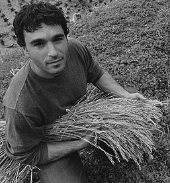HI Adrien,
I am still trying to find out about the availability of the podcast. One of my colleagues has ask me about it as well.
I know a fair bit about the pharmaceuticals that end up in the water supply. Or at least can find out about it. I work a a chemist in Canada and we do water sampling as well as soil testing. So ask away if you want to know anything in particular. I might not know straight off hand but can find out.
One of the chemicals that I was not aware of, but thinking about it makes sense, was DEET. That wonderful bug spray North Americans are using by the hecto gallon every year.
More disturbing were pharmaceuticals that act as so called "endocrine disrupters". Those chemicals are of steroidal nature and mimic hormones. I was aware of those before. Only 1-2% of the active ingredient of birth control pills is digested by the body. The rest is "discharged" and ends up in our sewage systems. Since treatment plants are not designed (not yet) to target those chemicals they end up in our watersheds and at some point in your glass on the dinner table. Great, right?
The problem with those are that in the aquatic environment they can cause aquatic species to turn from male to female, or at least exhibit female physiology and become sterile. Needless to point out what goes along with that.
I will try to get a link to the webinar. Dr. Snyder explored certain treatment methods to decrease the amount and concentration of such anthropogenic chemicals and explains his findings in detail. He also points out how the distribution of the chemicals in Lake Mead are different depending on the chemical compound.
Hope this helps.
Nils






